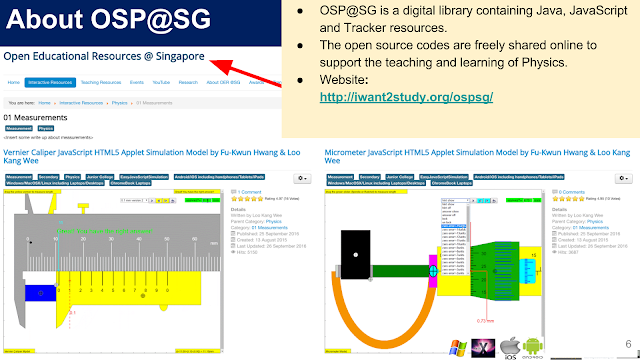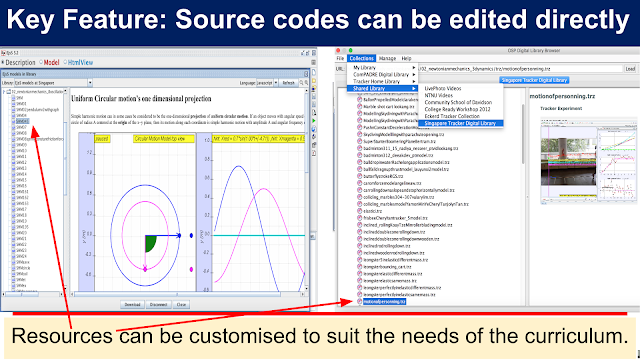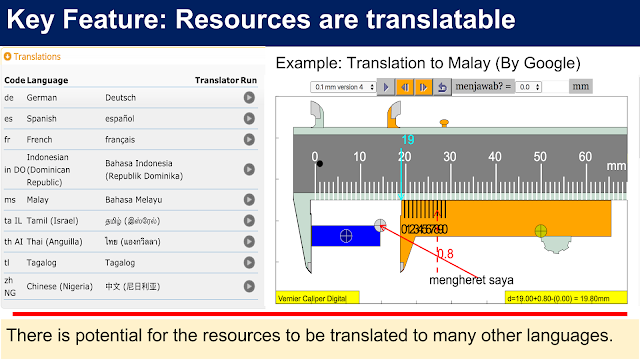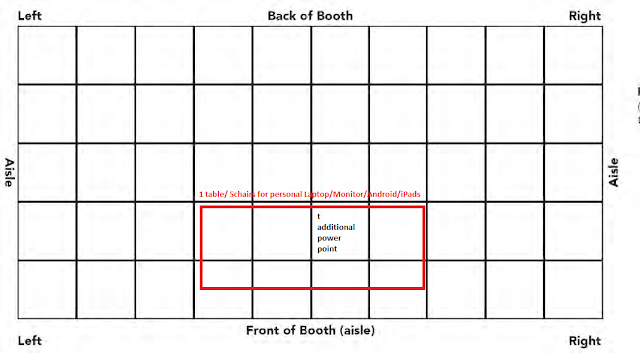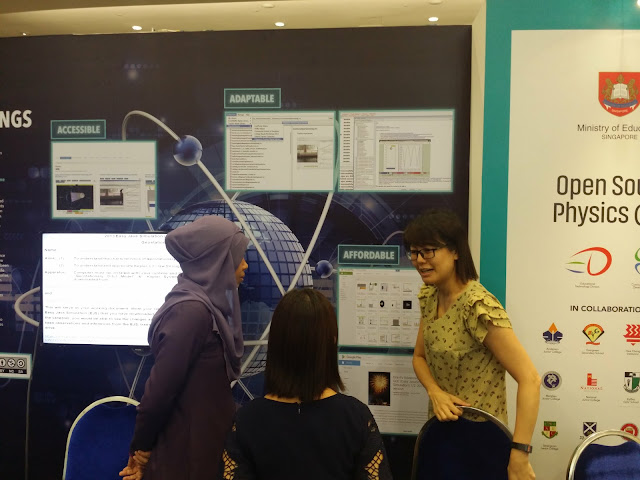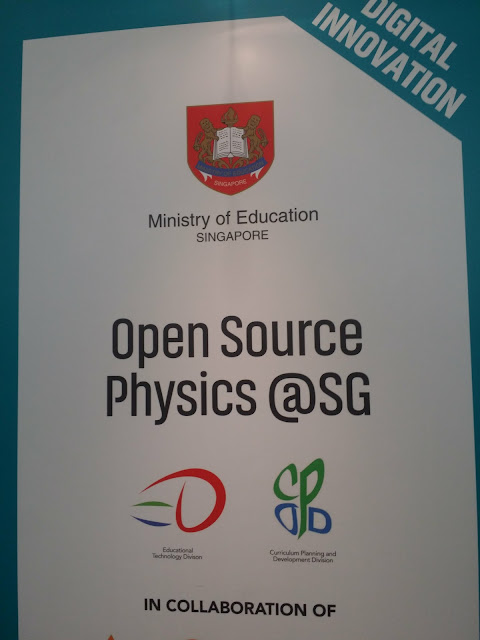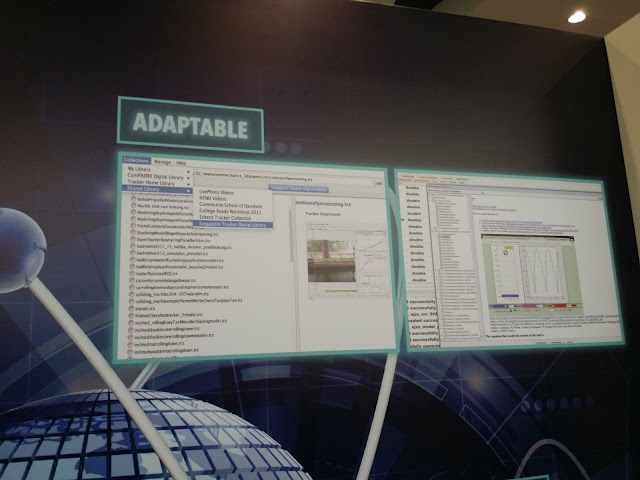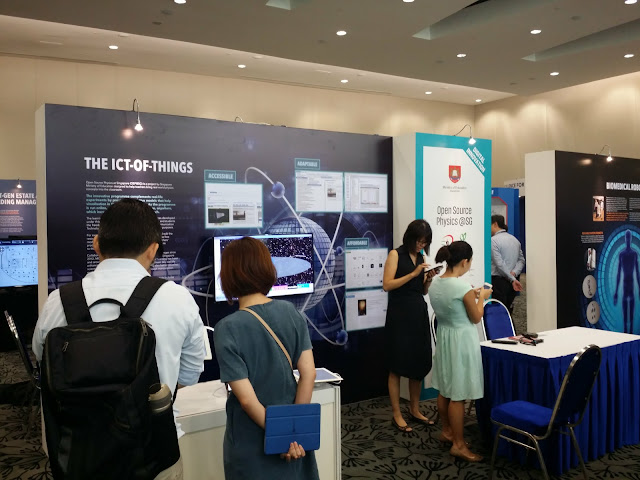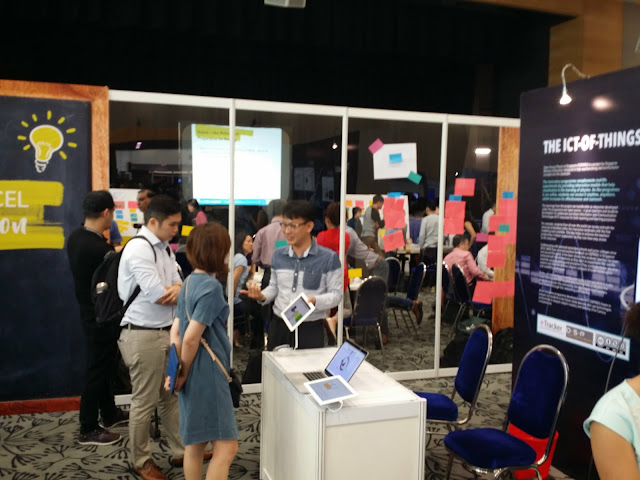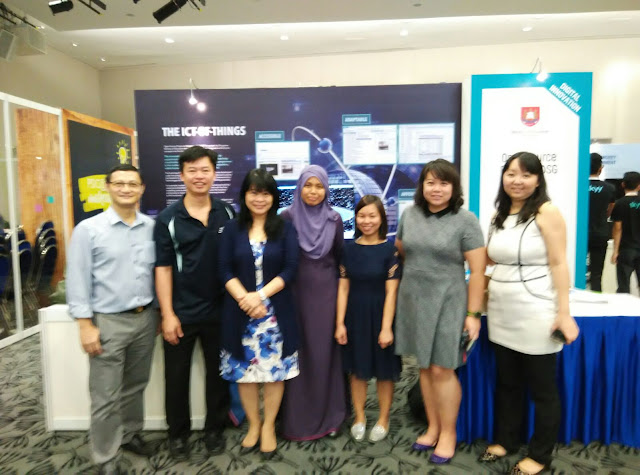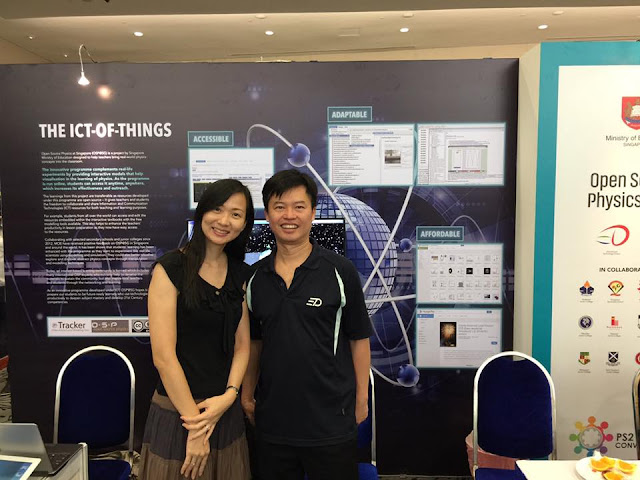PS21 ExCEL CONVENTION 2016 Public Service and Open Source Physics at Singapore
Briefing Document: Open Source Physics at Singapore (OSP@SG)
1. Introduction
This document summarizes key information about the Open Source Physics at Singapore (OSP@SG) project, a Singapore Ministry of Education (MOE) initiative aimed at enhancing physics education through open educational resources. The primary source material is a webpage detailing the project and its presentation at the 2016 PS21 ExCEL Convention.
2. Core Idea & Objectives
OSP@SG is a project designed to make real-world physics concepts accessible to teachers and students, both in and out of the classroom, through the use of open source and open educational digital resources. The core objectives are:
- Accessibility and Equity: Provide "inclusive and equitable quality education and lifelong learning for all" through resources that work on computers and mobile devices, making them accessible "anytime, anywhere."
- Complementing Real-Life Experiments: The resources are intended to complement, not replace, hands-on experiments, offering interactive visualizations.
- Pedagogical Innovation: Emphasize "mathematical modelling" where students' mathematical ideas can be tested against real-life and simulated data. This is described as "pedagogical innovation" by UNESCO.
- Open Source & Collaboration: Promote the sharing and adaptation of resources, with the source codes openly available so they can be remixed, redistributed, and repurposed under Creative Commons licenses.
3. Key Themes & Concepts
- Open Educational Resources (OER): OSP@SG heavily leverages the concept of OER, providing digital tools that are freely available and modifiable. The project encourages users to "remix, redistribute the customized or re-purpose resources."
- Student-Centric Learning: The project promotes "student-centric pedagogy where students learn to experiment like real life scientists using modelling and simulation." Students can "better visualise, explore and discover abstract physics concepts through manipulation and modelling techniques."
- Mathematical Modeling: A central pedagogical approach, where students' mathematical ideas are tested and compared against real-world or simulated data.
- Technology Integration: ICT plays a crucial role in "preparing our students to be Future-ready Learners" and in helping them "deepen subject mastery and develop 21st Century Competencies."
- Collaboration and Community: The program has fostered a global learning community, including experts, teachers, and students who contribute to the resources and its ongoing development. "An interest-based learning community for the OSP@SG has been formed...teachers in local schools are now taking greater ownership of the materials they author."
- Transferability: OSP@SG resources are not confined to Singapore. The project highlights the “transferability of OSP@SG is the ‘open data’ idea,” and aims to benefit learners worldwide.
4. Functionality and Features
- Interactive Simulations & Models: The OSP@SG website provides access to over 300 open source and open educational digital resources, including JavaScript-based simulations and models covering a broad range of physics topics. These resources are accessible through mobile browsers and can also be downloaded via apps and e-books.
- Mathematical Modeling Functionality: The simulations allow students to test their mathematical models and compare the results to real-life data or simulations.
- Source Code Access: For more advanced users, the project emphasizes that “source codes” are freely accessible, allowing for modification and repurposing of the resources.
- Variety of Formats: The resources include a wide variety of formats, including JavaScript applets, HTML5 models, ebooks and apps on both Android and Apple app stores. The materials run on "computers and mobile devices."
- Specific examples: The materials include diverse physics topics, such as "Horizontal 3D Circular Motion of Mass on a Table," "Flight Dynamics Gimbal," "Three States of Matter," "Alternating Current AC Generator", "Magnetic Field of 2 current conducting wires," "Projectile Motion Energy Model" "Kepler Orbit" "Electric Field", and "Hookes Law Model".
5. PS21 ExCEL Convention Presentation
- The OSP@SG project was presented at the 2016 PS21 ExCEL Convention, an event showcasing innovation and digital technology in the Public Service and private sectors.
- The presentation emphasized the project's accessibility, adaptability, and affordability.
- Interactive elements for the booth included demos of the website with over 300 resources, plus apps and ebooks. The convention booth allowed visitors to interact with these resources on their own mobile devices.
6. Impact and Recognition
- Positive Feedback: The project has received "positive feedback... both in Singapore and around the world."
- Global Network: It has fostered networks of educators across Southeast Asia.
- Awards: OSP@SG has received numerous awards and recognitions, including a "Ministry of Education GOLD Innergy Award 2016" as well as the "UNESCO King Hamad Bin Isa Al-Khalifa Prize for the Use of ICTs in Education 2015-6". The awards underscore its impact and recognition in innovation in education.
7. Key Quotes
- “Open Source Physics at Singapore (OSP@SG) is a project by Singapore Ministry of Education which helps teachers bring real-world physics concepts into the classroom.”
- "The programme is innovative in that it complements real-life experiments by providing interactive resources that help visualisation."
- "The modelling tools available are free for students all over the world to access and edit. Anyone could remix, redistribute the customized or re-purpose resources under the licenses compatible with creative commons attribution."
- "The key message is ICT plays an integral role in preparing our students to be Future-ready Learners and as Future-ready Learners, students use ICT productively to deepen subject mastery and develop 21st Century Competencies."
- "OSP@SG primary objective is to provide open source and open educational digital resources that runs on computers and mobile devices, complementing real-life experiments for an “inclusive and equitable quality education and lifelong learning for all.”
- “The transferability of OSP@SG is the ‘open data’ idea, where the OSP@SG activists(teachers and students) published their usable digital resources with the source codes so that anyone could remix and redistribute the customized or re-purpose resources under the licenses compatible with creative commons attribution.”
8. Conclusion
OSP@SG is an innovative project that demonstrates how open educational resources and technology can be effectively used to enhance physics education. By emphasizing accessibility, student-centric learning, mathematical modeling, and open collaboration, OSP@SG has made a significant contribution to physics education in Singapore and beyond. The project is particularly noteworthy for its commitment to open source principles, allowing for global access and adaptation of its resources.
| Poster https://drive.google.com/file/d/0BzIvSg-TzZrZSmdRZy1UWXRWcy1oRGRIYjE4RVJ2VEE0Wkpr/view?usp=sharing |
updated 01/11/2016
given some picture for the background
 |
| 1920x1080 home computer |
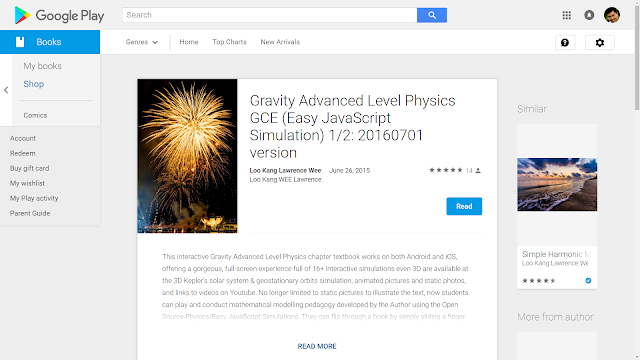 |
| 1920x1080 home computer |
 |
| 1920x1080 home computer |
 |
| accessible |
 |
| adaptable |
 |
| affordable |
 |
| affordable |
PS21 ExCEL CONVENTION 2016
Singapore 567720
https://sites.cube.gov.sg/sites/PS21Excel/Pages/awards.aspx
https://sites.cube.gov.sg/sites/PS21ExCEL/Pages/Exhibition.aspx
What is Excel Exhibition?
ExCEL Exhibition: The Exhibition will showcase innovation and digital technology possibilities in the Public Service and the Private Sector. There will be interactive booths and exhibits by public agencies and private sector companies to engage the audience. All ministries will be invited to submit their best projects that are aligned with the theme for the exhibition.SUMMARY
Open Source Physics at Singapore (OSP@SG) is a project by Singapore Ministry of Education which helps teachers bring real-world physics concepts into the classroom.
The programme is innovative in that it complements real-life experiments by providing interactive resources that help visualisation. The programme also has a function for mathematical modelling, where students’ ideas can be 'tested' or modelled and compared with real life or simulated data. It is accessible anytime, anywhere because students can run the programme on computers and mobile devices.
The learnings from this project are transferable as resources developed under this programme are open-source – it gives teachers and students the freedom to collaborate and share Information and Communication Technologies (ICT) resources for teaching and learning of Physics. For example, resources can be embedded within interactive textbooks. The modelling tools available are free for students all over the world to access and edit. Anyone could remix, redistribute the customized or re-purpose resources under the licenses compatible with creative commons attribution. This helps to enhance the teachers’ productivity in the lesson preparation as they can have easy access to the resources and need not start from scratch.
Since 2012, MOE has been collaborating with schools¹ on OSP@SG, with positive feedback received on the project both in Singapore and around the world. Some benefits include enhanced students’ learning through the student-centric pedagogy where students learn to experiment like real life scientists using modelling and simulation. Students could better visualise, explore and discover abstract physics concepts through manipulation and modelling techniques. In addition, an interest-based learning community for the OSP@SG has been formed. This community include the many OSP experts namely, Professor Francisco Esquembre, Fu-Kwun Hwang, Wolfgang Christian, Felix Gracia and Douglas Brown and many more in the world who helped to develop the materials to sustain the community. By networking and learning with the experts, teachers in local schools are now taking greater ownership of the materials they author by either remixing the models or creating new worksheets to support the guided inquiry or modelling pedagogy afforded through OSP@SG.
The key message is ICT plays an integral role in preparing our students to be Future-ready Learners and as Future-ready Learners, students use ICT productively to deepen subject mastery and develop 21st Century Competencies.
footnote
¹ Anderson Junior College, Evergreen Secondary School, Hwa Chong Institution, Innova Junior College, Meridian Junior College, National Junior College, Raffles Girls’ Secondary School, River Valley High School, Saint Andrew’s Junior College, Serangoon Junior College, Victoria Junior College and Yishun Junior College.
v1
This MOE, Singapore project called, Open Source Physics at Singapore (OSP@SG) helps teachers to bring real-world physics concepts in and outside schools through Open Educational Resources.
OSP@SG also aims to inspire love for learning and promote learners to be more like scientists through the pedagogical practice of "mathematical modelling", where students’ mathematics ideas can be compared with real life and simulation data, themed as “pedagogical innovation” by UNESCO, Paris, 13th January 2016.
Non-tangible benefits include formation of networks of educators from Indonesia, Malaysia, Philippines, Thailand etc and knowing that OSP@SG have in some ways, benefited teachers and students beyond Singapore borders, shaping the world to be a better place for everyone.
INTERACTIVE ELEMENTS FOR THE BOOTH
- Exhibits that are Engaging and Interactive e.g. Activities, games, souvenirs to interest, excite and
engage visitors - Innovative, digital solutions that could inspire visitors to apply what they learnt
v2
Visitors will be guided to the Open Source Physics at Singapore (OSP@SG) to access the website with 300+ open source and open educational digital resources that runs on their own mobile devices. There are apps and e-books on Android Playstore and Apple App Store that can download these resources for off-line use. The interactive hands-on experience could take the form of visitors playing with the apps, ebooks, or interactive resources on their mobile device browser.
For more interested visitors, there can be live demonstration of the actual tool. They will get to see where to get the source codes and understand simple ways to edit the source codes. This can be done on the spot to inspire them to start coding and redistributing their own re-purposed open educational digital resources.
v1
Visitors will be guided to the Open Source Physics at Singapore (OSP@SG) by Googling "OSP@SG" as keyword search, to access the website with 300+ open source and open educational digital resources (mostly Physics and Primary Mathematics) that runs on their own mobile devices. There are apps and e-books on Android Playstore and Apple App Store that can download these resources for off-line as well use, for an “inclusive and equitable quality education and lifelong learning for all". The interactive hands-on experience could take the form of visitors playing with the apps, ebooks, or interactive resources on their mobile device browser, Google Chrome is highly recommended.
Resources for Backdrop
Photo gallery
https://www.facebook.com/leong.tzekwang.1/videos/10209001959778483/
 |
| Add caption |
FAQ about Open Source Physics at Singapore (OSP@SG)
- What is Open Source Physics at Singapore (OSP@SG), and what is its primary goal? OSP@SG is a project by the Singapore Ministry of Education (MOE) that provides open-source, digital educational resources for teaching and learning physics, and some primary mathematics. Its primary goal is to offer free and accessible materials that complement real-life experiments. These resources, accessible on computers and mobile devices, aim to provide "inclusive and equitable quality education and lifelong learning for all".
- How does OSP@SG enhance physics education for students? OSP@SG enhances physics education through interactive simulations and modeling. Students can manipulate and explore abstract physics concepts, experiment like scientists using virtual models and simulations, test their mathematical ideas against real-life and simulated data, and use resources to better visualize and discover concepts. The program also allows students to learn anywhere, anytime on their devices, thus facilitating a student-centric pedagogy.
- What is the role of "mathematical modeling" within the OSP@SG program? Mathematical modeling is a key pedagogical approach within OSP@SG, where students can compare their mathematical ideas with both real-life and simulated data. This allows students to test their hypotheses in a visual and practical way, fostering a deeper understanding of scientific concepts through experimentation and comparison of theoretical models with actual and simulated data.
- What does it mean for OSP@SG resources to be "open source," and how does this benefit educators and students? "Open source" means that the digital resources, including source codes, are published under licenses compatible with Creative Commons Attribution (CC-BY-SA-NC). This allows anyone to access, use, remix, redistribute, and repurpose the materials for non-commercial purposes, thus encouraging collaboration and sharing. This benefits educators by providing them with free access to a wealth of teaching materials, saving time in lesson preparation and promoting community based creation of resources. Students also benefit from more collaborative learning environment, using tools which can be modified and customized to their learning needs.
- How does OSP@SG promote collaboration and community building among educators? OSP@SG promotes collaboration and community by forming a network of educators and experts from across the world. Educators can connect with OSP experts, share resources, and learn from each other's teaching practices, leading to a stronger community that fosters innovation and improvement of learning materials, and supports the development of educators using ICT in their classrooms.
- What kind of interactive elements are included in the OSP@SG resources? The interactive elements include apps, e-books, and resources accessible through web browsers on mobile devices. Users can engage in hands-on activities with the resources by playing with apps, exploring interactive books, and running simulations on their devices, which can be downloaded for offline use. Additionally, users can even learn to modify the source code for further customization.
- Beyond Singapore, who is benefiting from the OSP@SG project? OSP@SG is benefiting educators and students beyond Singapore, particularly in countries such as Indonesia, Malaysia, Philippines, and Thailand, demonstrating that the OSP@SG program has a positive impact in creating an equitable learning environment and making high-quality educational resources accessible to everyone.
- How does OSP@SG contribute to the development of Future-Ready Learners? OSP@SG helps to create Future-Ready Learners by emphasizing the productive use of ICT to deepen subject mastery and develop 21st-century competencies. By engaging with modeling and simulation tools, students enhance their problem-solving skills, critical thinking abilities, and innovative thinking, preparing them to be more adept at navigating our modern technological society.

